News WOSCU
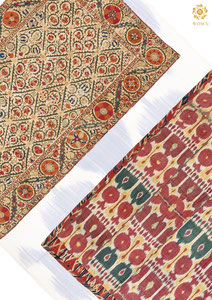
Traditions and Symbolism in the art of Suzani
The art of Suzani likely emerged in the Central Asian khanates in the mid-18th century. It is typically classified into several schools: the Bukhara school (including Nurota, Shahrisabz, Karshi, and other cities), the Samarkand school (with centers like Urgut, Tashkent, and Pskent), and the Fergana Valley school, which encompasses its settlements.
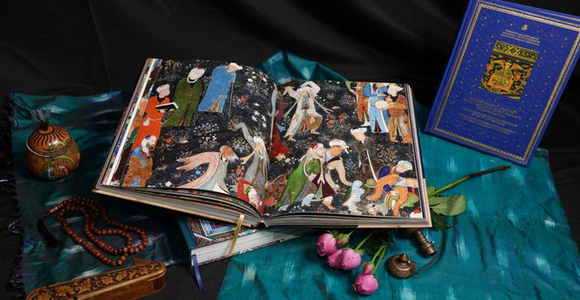
Mani and Behzad: Masters of Eastern Miniature Art
In Islamic tradition, Mani is revered as the founder of painting, an unparalleled artist of his time. His famous work “Arzhang” is considered one of the greatest artistic achievements of antiquity. Mani's influence on Eastern miniature art was so significant that artists and connoisseurs of Eastern painting regarded him as the foremost master for centuries.
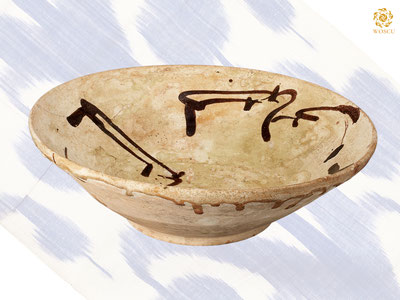
Black Engobe Bowl: The Art and Heritage of Nishapur
The black engobe bowl is an important element of Uzbekistan's cultural heritage. Originating from Nishapur, it reflects the high level of craftsmanship of local potters in the 10th century, when the city was a key trading center of the Samanid Empire.
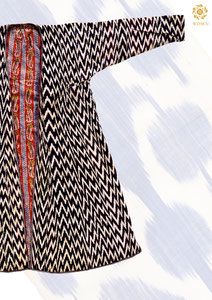
Uzbek Silk Weaving Art
In the second half of the 19th century, the art of silk weaving flourished in the oases along the Great Silk Road, with the seven-colored khan-atlas standing out. These unique fabrics were produced in workshops that employed a division of labor.
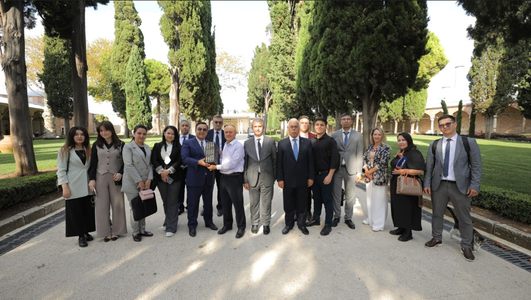
Uzbekistan to Publish Encyclopedia on Great Scholars in Collaboration with Turkey
As previously reported, from September 15 to 19, a delegation led by the Director of the Center for Islamic Civilization of Uzbekistan, Chairman of the WOSCU Board F. Abdukhalikov, held a series of events, roundtables, presentations, and exhibitions in Turkey.
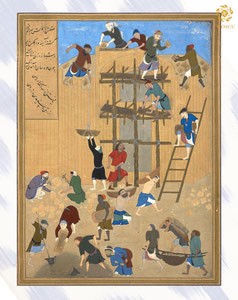
The Role of Craftsmen and Labor in Timurid Art
During the Timurid period, influenced by the Sufi order of Naqshbandiya, craftsmen occupied an important place in society. Artisan guilds became not only centers of production but also spiritual development, facilitating the emergence of images of ordinary people and their labor in miniature painting.
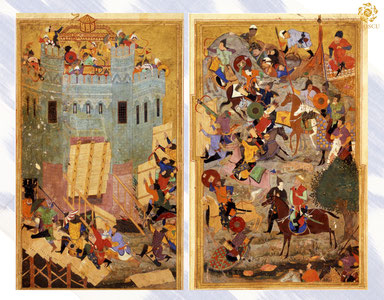
Early Illustrations of the “Zafar-nama”: The Art and Politics of Timur’s Era
The earliest known illustrations of the "Zafar-nama," dating back to the first half of the 15th century, were created in Shiraz during the reign of Ibrahim Sultan. One such manuscript (1435-1436) is housed in the Metropolitan Museum in New York.
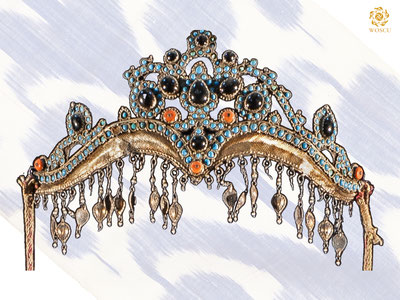
The most favorite jewelry of brides in Samarkand and Tashkent
The origins of jewelry in Uzbekistan are lost in the depths of millennia. In the 19th century, the largest centers of this craft were Khiva, Bukhara, Samarkand, Karshi, and Kokand. Each center had its own shapes and decorations.

WOSCU gift to Suleymaniye Library: A Precious "Kattalangar Quran"
During the Center for Islamic Civilization delegation's visit to Turkey, the World Society for the Study, Preservation, and Popularization of Cultural Legacy of Uzbekistan (WOSCU) presented a valuable copy of the “Kattalangar Quran” as a gift to the Suleymaniye Library in Istanbul.
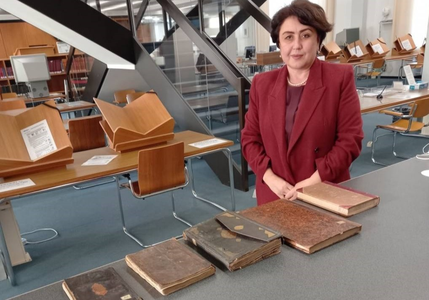
What is special about the "Bibliotheque Orientale" from the collection of the National Library of Uzbekistan?
"Bibliotheque orientale" (Oriental Library or Oriental Encyclopedia) is one of the oldest books in our collection.
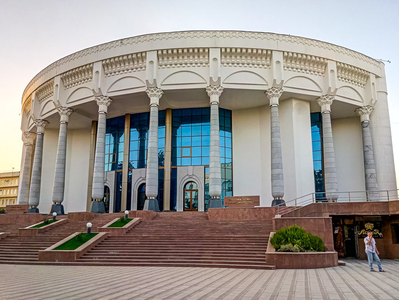
What old foreign editions are kept in the National Library of Uzbekistan?
The collection includes publications from the famous Aldus Manutius printing house, books published by the Danish company Elzevir (16th–18th centuries), as well as over 4,000 Western European books, which are valuable sources for studying the history, literature, and art of Western European countries.
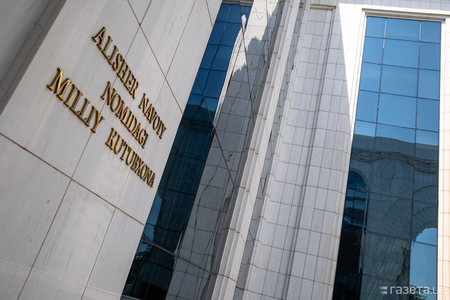
How is the collection of the National Library of Uzbekistan replenished these days?
Today, the collection is replenished with books received from other departments and institutions, as well as publications donated by private individuals.
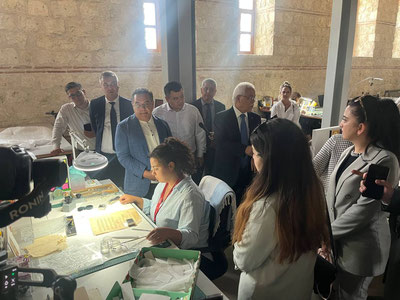
Exploring the “Rami” Library in Istanbul
The WOSCU and Center for Islamic Civilization delegation is currently at the “Rami” Library, a prominent library in Istanbul.
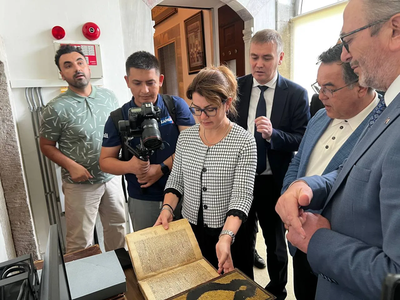
Photo Report from the Suleymaniye Manuscript Library
Photo Report from the Suleymaniye Manuscript Library
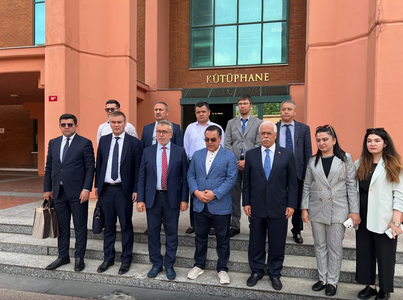
Visit of the Delegation of the Center for Islamic Civilization in Uzbekistan to the Center for Islamic Studies (ISAM)
On September 18, 2024, a delegation from the Center for Islamic Civilization in Uzbekistan visited the Center for Islamic Studies (ISAM) in Istanbul. As part of the visit, presentations and discussions were held to strengthen cooperation between the two institutions in the field of Islamic studies and cultural exchange.
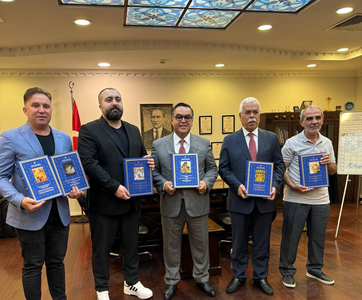
Exploring the Innovative Experience of the Historical Museum “Panorama 1453”
As is well known, the geographical location of Istanbul has undoubtedly contributed to its incredible rich cultural and historical past. This city has played a crucial role in history and has experienced numerous events that changed its fate.
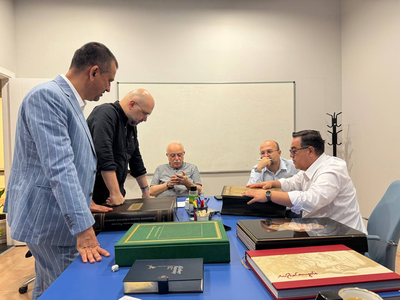
A preliminary agreement was reached with the publishing house "Mega Basim" for the publication of book-albums.
The delegation of the Center for Islamic Civilization of Uzbekistan, currently in Turkey, visited the publishing house "Mega Basim."
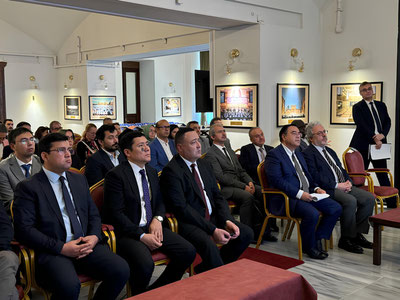
Photoreport from the media event “Uzbekistan-Türkiye: Common Roots and Common Heritage”
Photoreport from the media event “Uzbekistan-Türkiye: Common Roots and Common Heritage”
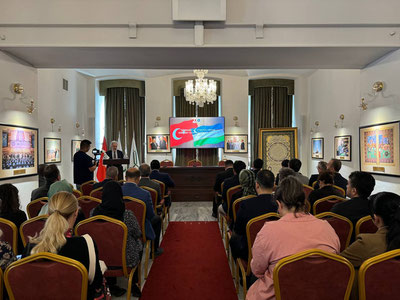
The media event “Uzbekistan-Türkiye: Common Roots and Common Heritage” started at IRCICA
Today, at the Research Center for Islamic History, Art, and Culture (IRCICA) under the Organization of Islamic Cooperation (OIC), an event was launched, organized in collaboration with the Center for Islamic Civilization of Uzbekistan, WOSCU, and IRCICA.
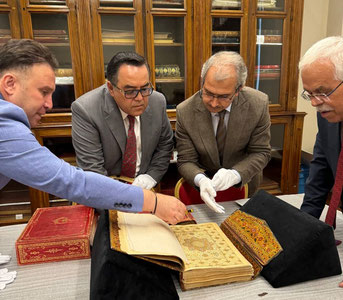
The Delegation from the Center for Islamic Civilization Continues to Study Turkey's Experience in the Field of Museum Affairs
A delegation led by Firdavs Abdukhalikov, Director of the Center for Islamic Civilization under the Cabinet of Ministers of the Republic of Uzbekistan and Chairman of WOSCU, continues its visits to museums in the Republic of Turkey.

Delegation of the Center for Islamic Civilization in Turkey
To strengthen international cultural cooperation and exchange of experiences, a delegation from the Center for Islamic Civilization, led by the Director of the Center and Chairman of WOSCU, Firdavs Abdukhalikov, is visiting Turkey.
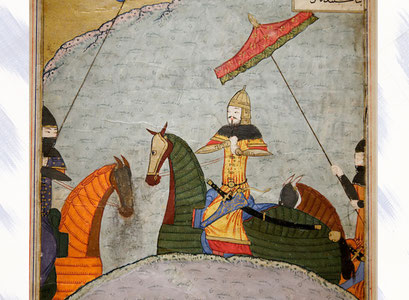
Ancient foreign publications dedicated to Amir Temur
Among the foreign publications stored in the National Library of Uzbekistan and dedicated to Timurid history is the work of the famous medieval author Sharaf ad Din Ali Yazdi “Zafarnama” (“Book of Victories”).
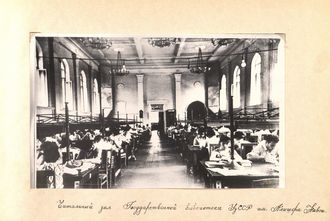
Personal libraries of Central Asia from ancient times to the beginning of the 20th century
The history of the creation and existence of personal libraries and book collections on the territory of Central Asia, which goes back to the distant past – the 8th – 14th centuries, the time of the great states of Samanids, Karakhanids and Timurids, deserves attention and is really very interesting.
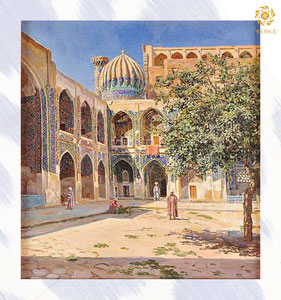
The first artists of Uzbekistan: From traditions to new art
It is well known that Uzbekistan is endowed with a unique centuries-old historical and cultural legacy reflected in the original architectural monuments, miniature and traditional crafts. However, the shaping of European art forms such as painting, graphics and sculpture started in the early 20th century.
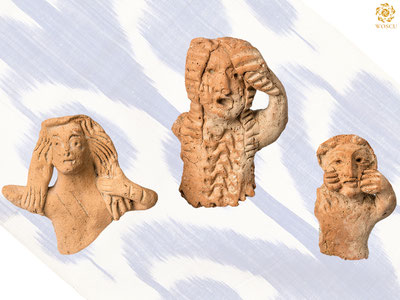
The musical heritage of Uzbekistan in the Hermitage
The State Hermitage in Saint Petersburg preserves the largest collection of artifacts of cultural, historical and artistic value in the world. The museum collections are colossal in their scope of various cultures and exhibits.
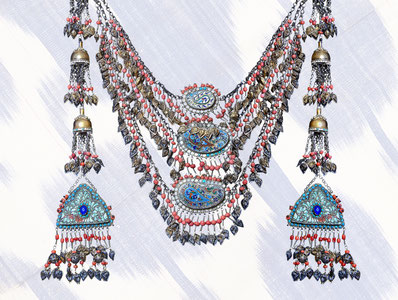
Khorezm jewelry
The creation of artistic metalwork is one of the oldest crafts and applied arts, second only to pottery.
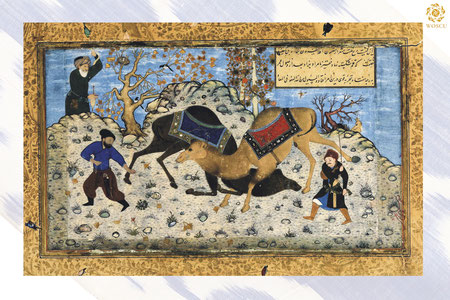
"Two Camels" by Behzad
The miniature "Two Camels," created by the masterful painter Kamoliddin Behzad in 1530, is considered a masterpiece of Persian miniature art. This work is part of the collection “Gulshan” housed in the Gulistan Palace Library in Tehran.
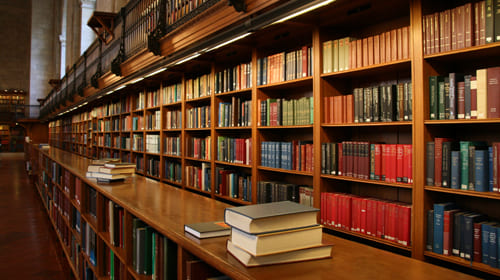
The Fate of the Unique Library Fund of Duchi-Ishan
The library collection of Muhammad Ali Sabirov, a Mingtuba Ishaan residing in Andijan and known as Duchi-Ishan, was truly unique.
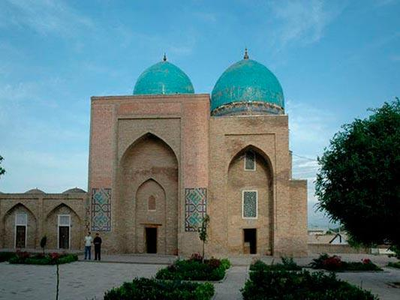
For whom was the Gumbazi Sayyidan in Shahrisabz built?
Shakhrisabz is an ancient city in Uzbekistan with more than 2,700 years of history, the birthplace of the great conqueror Amir Timur and the first capital of his vast empire.
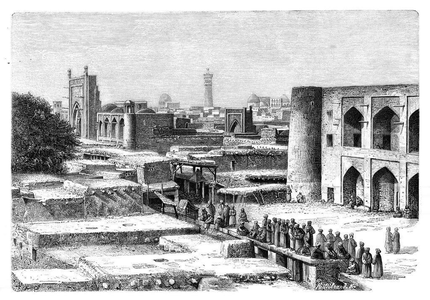
The First Photographs of Uzbekistan
The central areas of the region - the territory of modern-day Uzbekistan - especially attracted the attention of photographers.
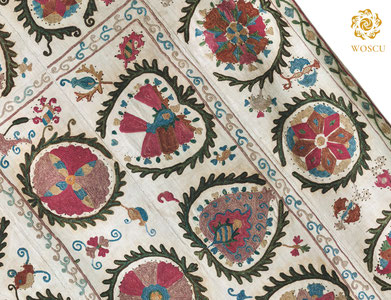
Do you know about bosma and chain stitches?
Basic embroidery stitches are bosma and chain stitch.
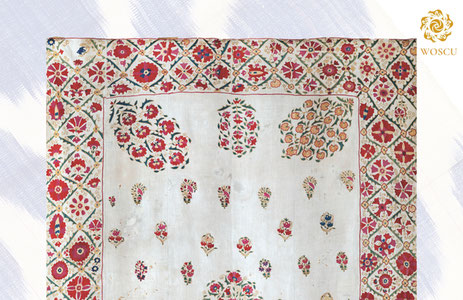
19th-century embroidery in the National Gallery in Prague
The National Gallery Prague is the successor of the Picture Gallery of the Society of Patriotic Friends of the Arts, which was established as early as 1796. The Modern Gallery was founded in 1902, its collection and exhibition activities focused on art of the 19th and 20th centuries.
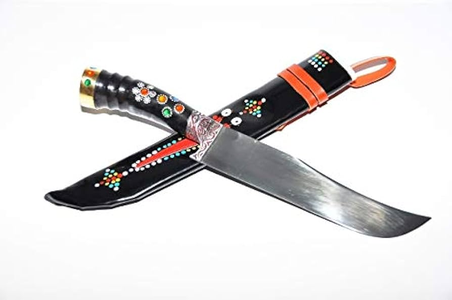
Metal kinboks with embossed decoration
Uzbek knives are very distinctive and they combine the artistic merit of appearance and functionality. Highquality steel is always used to produce knives.
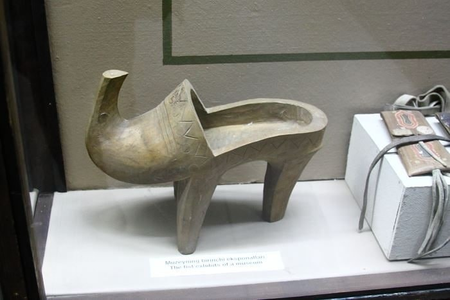
What did shepherds wear on mountain pastures?
In the past, making footwear, like any other craft, was something between amateur craftsmanship and genuine art.
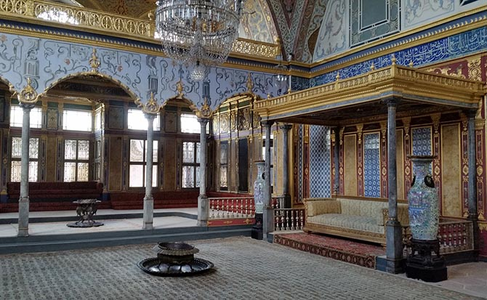
Mirajnama paintings text copied in Tabriz
Some leaves with beautiful paintings from another earlier text, the Mirajnama, copied around 1317–1335 in Tabriz, were included in album H. 2154 of the Topkapi Palace library in Istanbul.
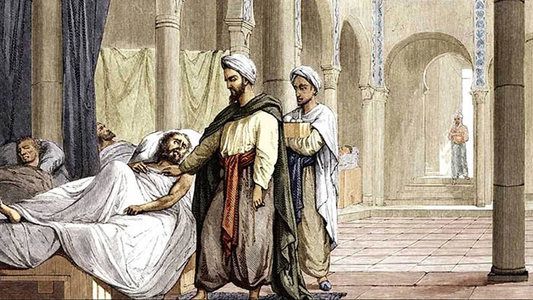
Do you know about the scientific encyclopedia of Ibn Sina, kept in the Oxford Library?
"Kitab ash-Shifa" ("The Book of Healing") is the greatest philosophical work of Ibn Sina, author of more than 450 works.
